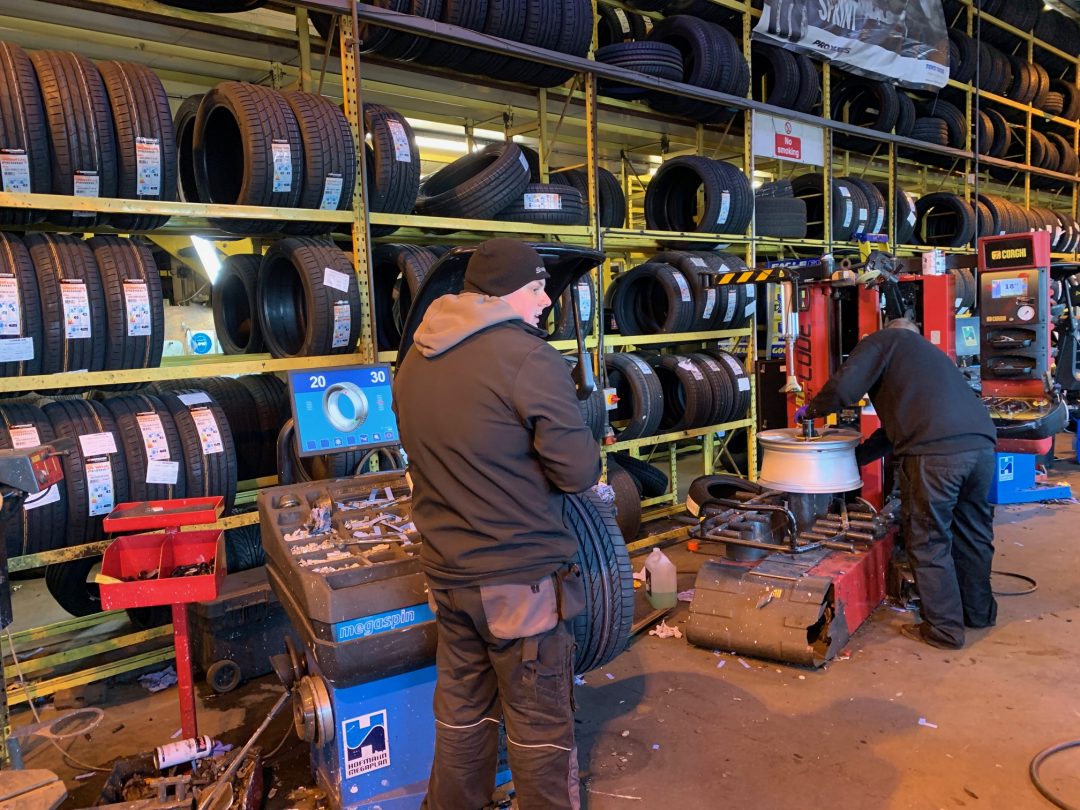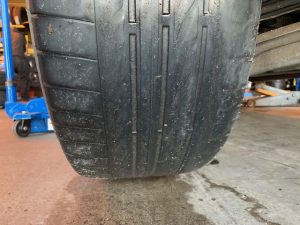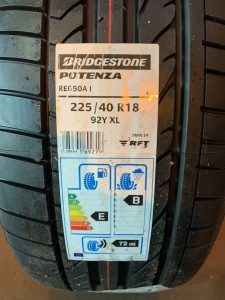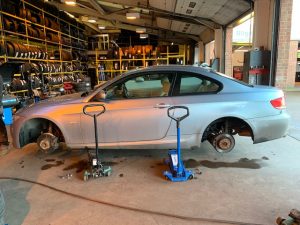Choosing new tyres for your car? Get a grip of the options on offer

Choosing new tyres for your car can take time – they are so much more than black circles of rubber. DAVID HOOPER looks at some of the technology, how tyres perform, and when you should change them
TYRES – you know, those black things on your wheels that we all take for granted and many of us forget to check on anything like a regular basis in the midst of our busy lives.
Neglect them at your peril though, they are the only things between your car, the car in front, or the nearby hedges, walls and fields beyond, and partly why I chose premium Bridgstone Potenza tyres for my car.
Tyres are a science in themselves these days, with different portions of the treads having different patterns to do different things and being made of different rubber compounds, yet they are so often taken for granted – and they shouldn’t be. Go on, just think for a minute, when was the last time you checked your tyre pressures, or inspected the side walls for any cuts or bulges which could cause a motorway blow out?

A new car tyre comes with 8mm of tread, while the legal limit at which you should change your tyres in the UK is 1.6mm. In Germany it’s 3mm, and UK police change tyres on their vehicles at that point too, but surely there can’t be much difference between 1.4mm… can there?
Let me assure you that there is. I’ve seen it first-hand on tyre-testing exercises with some of the companies which make them – and it’s frightening.
Stopping distances increase massively with worn tyres on wet road surfaces. In one test, using the same car, we first tried a brake test from 60mph on new tyres with 8mm of tread. We had to cross a line at exactly 60mph, then hit the brakes as hard as we could. On the new tyres the car pulled up sharply. Then we switched to tyres worn to 3mm. The car still stopped comfortably, but a few metres further down the road. Then the tyres worn to the UK legal limit, and the difference was frightening – several car lengths – or numerous pedestrian crossings.
It was a genuine eye-opener.
So when it became time to choose a new set of tyres to my 10-year-old BMW 3 Series, I had a few decisions to make. The car comes with Bridgestone Potenza run-flat tyres as standard. Great if you get a puncture because you can still drive on them for a while, they’ll usually get you home, but there’s no spare wheel in the boot. The other drawback is that run-flats give a very hard, unforgiving ride as the sidewalls of the tyres are incredibly stiff to allow the car to be driven if the tyre deflates.

They are not so bad when they’re new, but as they wear, the ride becomes harsher and the car hops and skips over white lines when you change lane, and you feel every indentation of every cat’s eye you happen across.
Many BMW 3 Series owners dispense with run-flats and fit “ordinary” tyres which offer a much more comfortable ride, but if you put a spare wheel in your boot, even a space saver, it fills most of it, or you take the chance that you won’t get a puncture. If you do, you could almost put money on the fact that it will be on a rainy Sunday night when you have a long drive ahead of you. And you have to tell your insurance company that you’ve fitted “non-standard” tyres.
My next consideration was that fact that most BMWs are rear wheel drive. The preferred choice for enthusiastic drivers – until it snows, or gets icy, at which time most become about as much use as a chocolate fireguard. So, as we were going into the autumn, thoughts of winter tyres with bigger tread blocks and softer rubber compounds came to mind, or perhaps I should fit an All Season tyre, which offers the best of both worlds, but has to be a bit of a compromise in out-and-out performance terms.
A few phone calls uncovered a huge choice, but surprisingly, because like many BMWs, my car has different wheel sizes fore and aft, full winter and All Season tyres were in demand, or not available at all from some mainstream brands.
Ultimately, I decided to stick to the original equipment and opted for a brand new set of Bridgestone Potenza Run Flats which were fitted by local supplier Bush Tyres who were brilliant and full of expertise and advice.
The front tyres are 225/40 R18, while the rear pair are 255/40 R18. Tyres are rated for fuel economy, A being the most efficient, and G being the least efficient. These Bridgestone tyres are rated E, but I’m told the difference between best and worst equates to around a tank full of fuel over the life of the tyres.

Perhaps more important, especially on a rear wheel driven car is the wet grip performance, again rated A to G, with these tyres achieving a “B” rating, which is very good.
The other main indicator on the tyre label is the noise level, with these Bridgestones rated at 72 decibels.
Once fitted and the bill sorted, around £100 per corner fitted and balanced, as I drove away the difference was immediately obvious. The car felt so much smoother to drive, and steering, although power assisted, was noticably lighter on the steering wheel, so less stress through the power steering system.
I couldn’t resist taking the car for a quick spin, and at motorway speed there was noticably less noise than on the old, worn tyres, and the first time it rained after having them fitted, again I could feel the difference – the car felt much more secure on the road and less skittish, particularly through the corners as you apply the power coming out of a bend.
Some of the budget tyres on offer are quite good these days and they all have to meet minimum standards to be sold in the UK, but as with most things in life, you do get what you pay for and buying a premium product does have its benefits.
So next time you need tyres for your car, don’t just buy the first thing you’re offered, discuss the options, ask about fuel economy and wet grip ratings and how noise they are on the road – it all makes a difference to how the car performs, but most importantly, don’t let wear them down too low before making the switch.
When you have your new boots fitted, it’s also worth having the car’s wheel alignment checked to ensure that all the wheels are pointing in the right directions. Tyres are not cheap to replace, especially on these sorts of cars, so the last thing you need is for your tyres to worn away prematurely because the wheel alignment is not set up correctly, and with all these potholes around, there’s every chance they won’t be! It’s a false economy not to.
Click here for more information on Bridgestone Tyres.
Don’t miss our feature on an aftermarket tyre pressure monitoring system.
